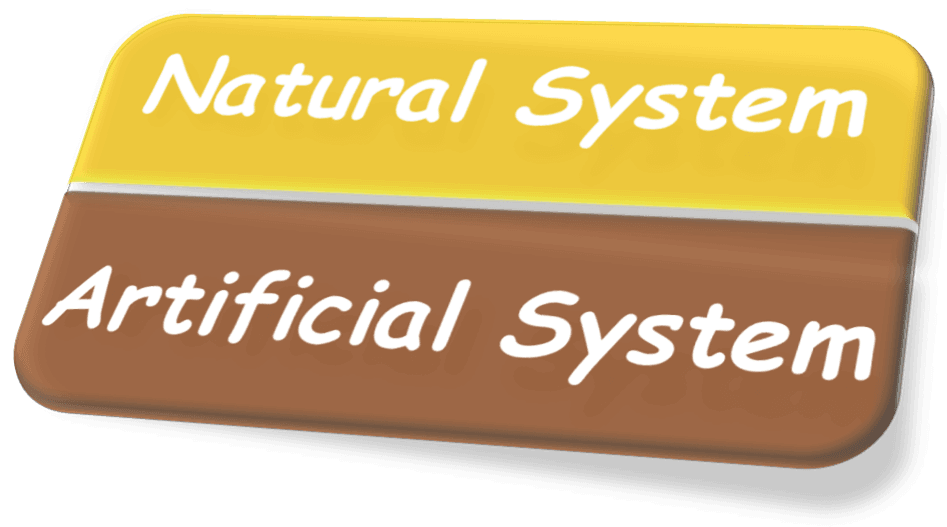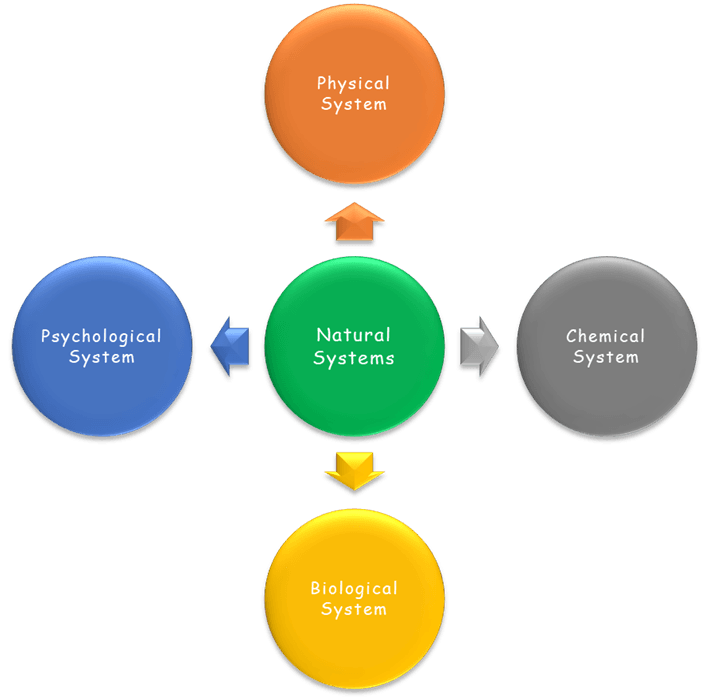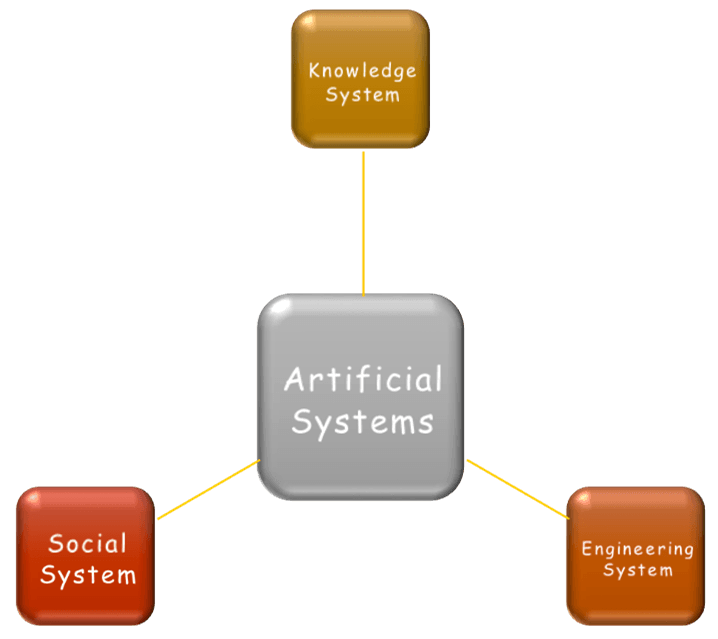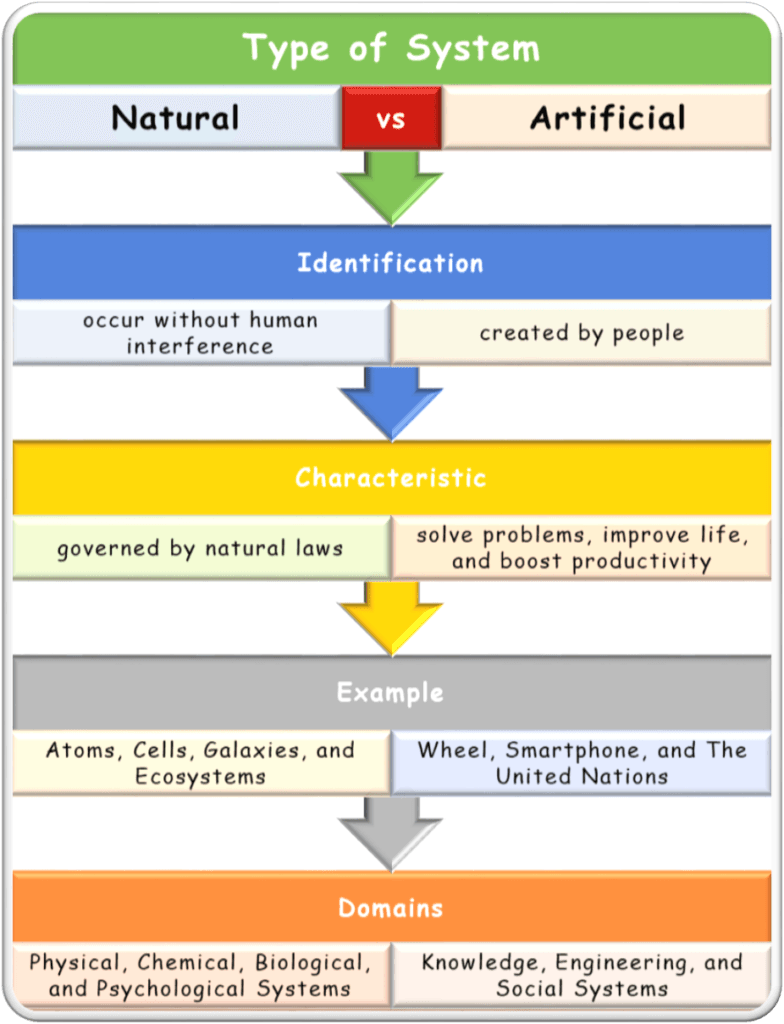Understanding systems becomes even more meaningful when we look at the 2 major types of systems: natural systems and artificial systems. Each has its characteristics, examples, and areas of use.
Table of Contents
Introduction
Every system tells a story—some written by nature, others engineered by human hands. From the tiniest cell to the largest satellite network, systems shape how the world functions. To truly understand them, we begin by asking:
Did nature design this, or did we?
System theory divides all systems into two powerful categories i.e., natural and artificial. This classification opens the door to deeper insights. From nature to technology, this classification of systems helps us to understand;
- “where systems come from
- “how do these systems operate”
- “how we can apply system theory in different areas of life”
2 Major Types of Systems | Natural System vs Artificial System
In the world of system theory, systems are grouped into two main categories.

Natural Systems (Creator’s Systems)
These systems occur without human interference. They are governed by natural laws, such as physics, chemistry, biology, and psychology.
Example
- Tiny Systems (like atoms and cells)
- Huge Systems (like galaxies and ecosystems)
Types of Natural Systems
The common types of these systems are given below.

Physical Systems
These are made of matter and governed by the laws of physics. It deals with;
- Atoms and molecules
- Planets, stars, and galaxies
- Forces like gravity and electricity
Example
Hydrogen gas forms when sub-atomic particles combine naturally. Chemical systems emerge from physical systems when atoms bond to create new materials.
Chemical Systems
These focus on how substances interact and change based on chemical laws.
Examples
- Water (H₂O), formed by hydrogen and oxygen bond
- Chemical reactions like combustion or digestion
Biological Systems
These are living systems, including organisms and how they function and interact.Biological systems grow from chemical systems, starting with molecules forming living cells.
Examples
- Plant life
- Human body
- Animal ecosystems
Psychological Systems
These involve the mind, emotions, and behaviours, influenced by both biology and the environment. These systems come from biological processes inside the brain, shaped by life experiences.
Examples
- Thought patterns
- Memory and learning
- Emotions like fear or happiness
Artificial Systems (Man-Made System)
These systems are created by people to solve problems, improve life, and boost productivity. They can range from simple tools to complex global organisations.
Examples
- A wheel
- A smartphone
- The United Nations
Types of Artificial Systems
The main types of man-made systems are listed here.

Knowledge Systems
These systems handle information and knowledge. They help us store, organise, and use data. These systems also help in education, decision-making, and research.
Examples
- Mathematics (involves solving numerical or logical problems)
- Databases (systems like MySQL and MongoDB that manage data)
- Logic (turns around the foundation of critical thinking and reasoning)
- Information Management Systems (tools for capturing and distributing data)
Engineering Systems
These systems are built by engineers. These systems are technical solutions to real-world problems. Each of these systems is designed to perform a task efficiently and reliably.
Examples
- Civil Engineering – Roads, bridges, buildings.
- Mechanical Engineering – Machines like robotic arms.
- Software Engineering – Programs like library tracking software or apps.
- Electrical Engineering – Power systems and devices like smart home apps.
- Chemical Engineering – Factories turning raw materials into products (e.g., water treatment plants).
Social Systems
These systems shape how people interact and organise in society. Social systems help manage people, ideas, services, and governance.
Examples
- Academic Institutions (like schools, colleges, and universities)
- Governments (like democracies or authoritarian systems)
- Organisations (companies like Apple or NGOs like the Edhi Foundation)
Differentiate between Natural and Artificial Systems

Conclusion
Natural systems and artificial systems coexist and often overlap. While natural systems are the building blocks of the universe, artificial systems are tools we have created to shape and improve our world.
By understanding both, we can better navigate science, society, and technology—and design smarter systems for the future.
Frequently Asked Questions
What is a system?
A system is a set of connected parts working together for a common goal.
Why are systems important to study?
Understanding systems helps us solve problems and improve processes in science, technology, and society.
Can a system be both natural and artificial?
Yes, for example, a human-computer interaction system combines biological and technological elements.
What are psychological systems based on?
They are based on brain function, behaviour, and emotional responses influenced by biology and experience.
Are all artificial systems based on technology?
No, they can also be social (e.g., legal systems) or knowledge-based (e.g., logic systems).
Do natural systems need maintenance?
Not in the human sense—they self-regulate but can be disrupted by human activity.
What is an example of a knowledge system?
A library database that stores, retrieves and manages book information.
How do engineering systems affect daily life?
They provide essential services like clean water, transport, and digital communication.
Differentiate between natural and artificial systems.
Natural (Creator’s) systems happen on their own. They include things like planets, animals, and the human brain.
Artificial (man-made) systems are made by humans to solve problems, like phones, governments, or machines.
Discuss characteristics, functions, and purposes with relevant examples of 2 major types of systems.
Systems that are natural, they are self-created, follow natural laws, and serve to sustain life and the universe—like ecosystems or the solar system.
Man-made systems are human-designed to improve life, solve issues, or manage tasks—like apps, roads, or schools.
